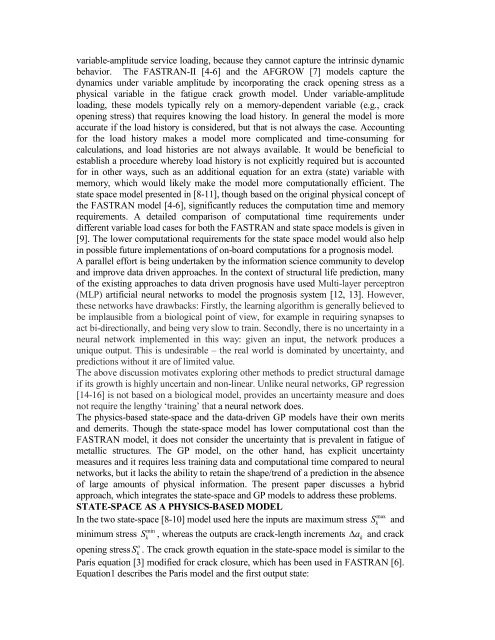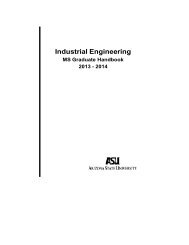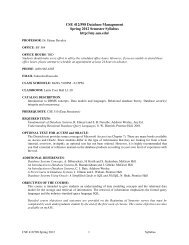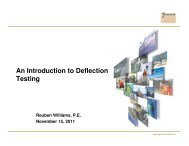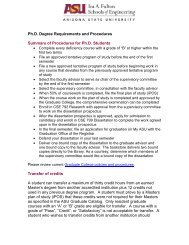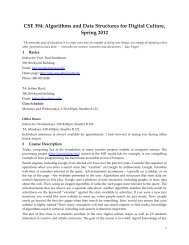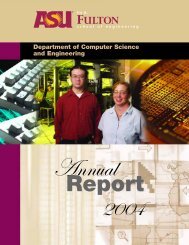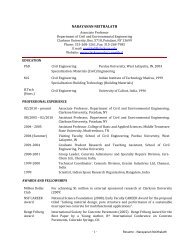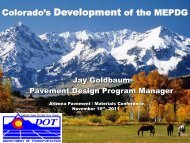Mixed Gaussian Process and State-Space Approach for Fatigue ...
Mixed Gaussian Process and State-Space Approach for Fatigue ...
Mixed Gaussian Process and State-Space Approach for Fatigue ...
You also want an ePaper? Increase the reach of your titles
YUMPU automatically turns print PDFs into web optimized ePapers that Google loves.
variable-amplitude service loading, because they cannot capture the intrinsic dynamicbehavior. The FASTRAN-II [4-6] <strong>and</strong> the AFGROW [7] models capture thedynamics under variable amplitude by incorporating the crack opening stress as aphysical variable in the fatigue crack growth model. Under variable-amplitudeloading, these models typically rely on a memory-dependent variable (e.g., crackopening stress) that requires knowing the load history. In general the model is moreaccurate if the load history is considered, but that is not always the case. Accounting<strong>for</strong> the load history makes a model more complicated <strong>and</strong> time-consuming <strong>for</strong>calculations, <strong>and</strong> load histories are not always available. It would be beneficial toestablish a procedure whereby load history is not explicitly required but is accounted<strong>for</strong> in other ways, such as an additional equation <strong>for</strong> an extra (state) variable withmemory, which would likely make the model more computationally efficient. Thestate space model presented in [8-11], though based on the original physical concept ofthe FASTRAN model [4-6], significantly reduces the computation time <strong>and</strong> memoryrequirements. A detailed comparison of computational time requirements underdifferent variable load cases <strong>for</strong> both the FASTRAN <strong>and</strong> state space models is given in[9]. The lower computational requirements <strong>for</strong> the state space model would also helpin possible future implementations of on-board computations <strong>for</strong> a prognosis model.A parallel ef<strong>for</strong>t is being undertaken by the in<strong>for</strong>mation science community to develop<strong>and</strong> improve data driven approaches. In the context of structural life prediction, manyof the existing approaches to data driven prognosis have used Multi-layer perceptron(MLP) artificial neural networks to model the prognosis system [12, 13]. However,these networks have drawbacks: Firstly, the learning algorithm is generally believed tobe implausible from a biological point of view, <strong>for</strong> example in requiring synapses toact bi-directionally, <strong>and</strong> being very slow to train. Secondly, there is no uncertainty in aneural network implemented in this way: given an input, the network produces aunique output. This is undesirable – the real world is dominated by uncertainty, <strong>and</strong>predictions without it are of limited value.The above discussion motivates exploring other methods to predict structural damageif its growth is highly uncertain <strong>and</strong> non-linear. Unlike neural networks, GP regression[14-16] is not based on a biological model, provides an uncertainty measure <strong>and</strong> doesnot require the lengthy ‘training’ that a neural network does.The physics-based state-space <strong>and</strong> the data-driven GP models have their own merits<strong>and</strong> demerits. Though the state-space model has lower computational cost than theFASTRAN model, it does not consider the uncertainty that is prevalent in fatigue ofmetallic structures. The GP model, on the other h<strong>and</strong>, has explicit uncertaintymeasures <strong>and</strong> it requires less training data <strong>and</strong> computational time compared to neuralnetworks, but it lacks the ability to retain the shape/trend of a prediction in the absenceof large amounts of physical in<strong>for</strong>mation. The present paper discusses a hybridapproach, which integrates the state-space <strong>and</strong> GP models to address these problems.STATE-SPACE AS A PHYSICS-BASED MODELIn the two state-space [8-10] model used here the inputs are maximum stress S maxk<strong>and</strong>minimum stress S k min , whereas the outputs are crack-length increments ak<strong>and</strong> crackopening stressS k o . The crack growth equation in the state-space model is similar to theParis equation [3] modified <strong>for</strong> crack closure, which has been used in FASTRAN [6].Equation1 describes the Paris model <strong>and</strong> the first output state:


